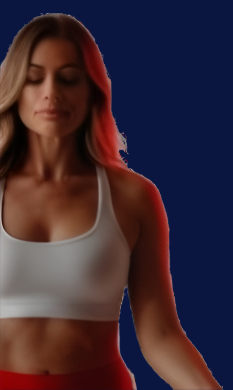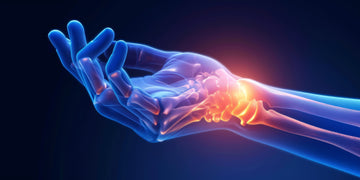Red light therapy, also known as photo biomodulation, has gained significant attention for its potential health benefits, ranging from pain relief to enhanced cellular function. However, determining the correct dosage is crucial for maximizing its therapeutic effects. The right dosing is a complex and subjective to individual.
Here’s a comprehensive guide to answer the Million $$$ Question, “What is the correct dose for red light therapy?”.
Understanding Red Light Therapy Dosage
Red light therapy involves using specific wavelengths of light to penetrate the skin and stimulate cellular activity. The effectiveness of the therapy depends on various factors, including the wavelength of the light, power and intensity, distance from the device, and duration of exposure.
Key Factors in Determining Dosage
Wavelengths
Different wavelengths have varying effects on the body. 630nm and 660nm are commonly used for superficial tissue for benefits such as skin health and reducing inflammation. In comparison, 830nm and 850nm are used for deeper absorption and provide recovery and repair benefits for muscles, bones and attached tissues and related chronic conditions.
Power and Intensity
The red light device's power output and intensity are the driving factors in its effectiveness. Higher power outputs offer more impact but must be used cautiously to avoid overstimulation. Clinical studies show benefits at light outputs varying from 20 to 200 mW/cm², which do not say much about a precise irradiance. Mimicking our natural red light supplier, the sun can be considered safe to consider exposure. The sun emits a 100 mW/cm2 irradiance on the average on a sunny day. This goes up to 160 mW/cm2 in tropical and warmer climates.
Distance from the Light Source
The power density of a light source is decreased with the distance the light travels. The impact of distance between the source and the subject is related to the environment (atmospheric conditions, ambient lighting) and has a direct influence on the dosage received. Depending on the desired duration of the red light session, which may be incorporated into another routine such as mobility, yoga and stretching, or a stand-alone session to treat a particular concern, the practical distance between the source and subjects, therefore, the duration of a session varies.
Duration of Exposure
Red light therapy triggers a chain of chemical reactions in our tissues, and the number of repeated reactions in a therapy is basically a matter of reactants (resources) available in the tissue. Therefore, the response that one can achieve from a single session is limited. An extended dose in a session will not have any further benefits and will decrease the ability to absorb wavelengths to good use in consecutive sessions. A red light therapy program should aim to provide an optimal dose and should provide a recovery period for the body to recover. As in all the other treatments, the body heals and recovers in the recovery phase.
Understanding Biphasic Response
Dr. Mercola states that, it’s important to realize that photo biomodulation is highly biphasic in dose.
As described in a study, the “biphasic dose-response” is described as there is an optimal dose of red light that maximizes therapeutic benefits. It has been consistently found that when the dose of red light stimulant is increased, a maximum response is reached at some value, and once the optimal dose is exceeded, the benefits begin to decline, and higher doses have inhibitory effects.
There are two approaches to the biphasic response mechanism. One relates it to excessive production of reactive oxygen, which means the cells do not have more fuel to react further. The latter is a hermetic response, claiming that red light is a mild stressor to the cell, where the cell kind of has this adaptive response and reacts by protecting itself from more of this stressor.
In Dr. Mercola’s article, the range of ideal power density is discussed as starting from 2 mW/cm2, and benefits would still exist up to 20 to 30 times (40 to 60 mW/cm2). Several hundred milliwatts are also highlighted as harmful.
As a result, low levels of light have a much better effect on stimulating and repairing tissues than higher levels of light, and it is important to get the dose right and to be in the range.
Reflection and Absorption, Efficacy of Red Light
The amount of red light absorbed and reflected by the skin significantly affects the efficacy of red light therapy. Skin can reflect a considerable amount of light, reducing the amount that penetrates and reaches the target tissues. Factors such as skin type, color, and condition influence how much light is absorbed or reflected.
While lighter skin tones are more reflective, and darker skin tones tend to absorb more red light. Certain skin conditions, such as hyperpigmentation or scars, can also affect how the skin reflects and absorbs red light. Areas with higher melanin concentrations or different tissue structures may also alter the therapy's effectiveness.
When calculating your dose, you can safely assume a 40% to 60% reflection, depending on your skin color.
Calculating the Dosage
The dosage in red light therapy is measured in joules per square centimeter (J/cm²). The formula to calculate the dose is:
Dose (in J/cm²) = Power Density (in mW/cm²) x Time (in seconds) x 0.001
For skin and topical treatments, the recommended sweet spot of dosing for a given treatment area is roughly 2-10 Joules/cm2.
For deeper tissues, such as muscles, ligaments, or bone, the sweet spot for a given treatment area is between 10-60 J/cm2. Consult your dermatologist for extended doses.
Practical Application and Tips for Red Light Therapy At Home
Starting Point
On your first days, start slow with just 2 to 5 minutes per treatment area, per session, and increase the duration -for a minute or so in every session- in moderation for your body to adapt to the therapy. Always stay away from the heat zone of the source. Space those consecutive treatments out enough to allow your skin to balance and recover. If treating a single area, you may moderate the session to 15 to 20 minutes. For best results, you should do a moderate session every other day.
Monitor Progress
Review your skin’s reaction and keep track of dosage as necessary. The progress comes with small increments. Take photos of yourself, measure pigmentation, joint response in specific actions to measure progress, than having instant reviews.
Hydration
Ensure proper hydration before and after sessions to enhance the therapy’s effectiveness and support cellular processes.
Consistency and Patience
Regular sessions are crucial for long-term benefits. It might take several weeks or months to see significant improvements, so patience is key.

Conclusion
10-15 minutes per treatment area is optimum for your body’s response. A distance of around 20 to 35 cm for deep tissue or 30 to 48 cm for superficial facial skin therapy on bare skin per day provides enough power intensity with Piri Red Panels, and is a great average usage guideline for almost everybody.
Our targeted therapy devices, Red Light Therapy Mask & Red Light Therapy Joint Support are specifically designed to be used in contact and are safe to use within the guidelines provided on our product pages.



